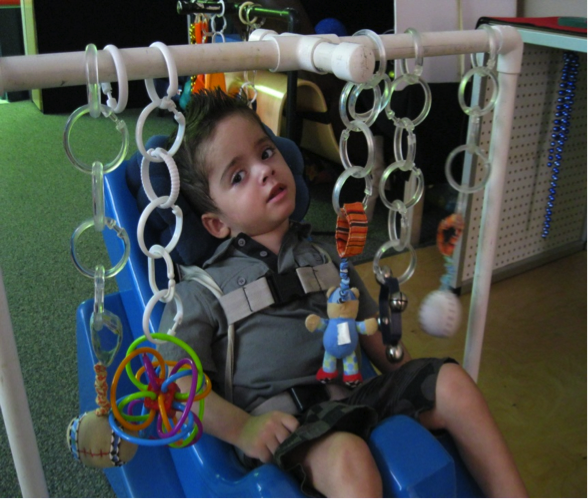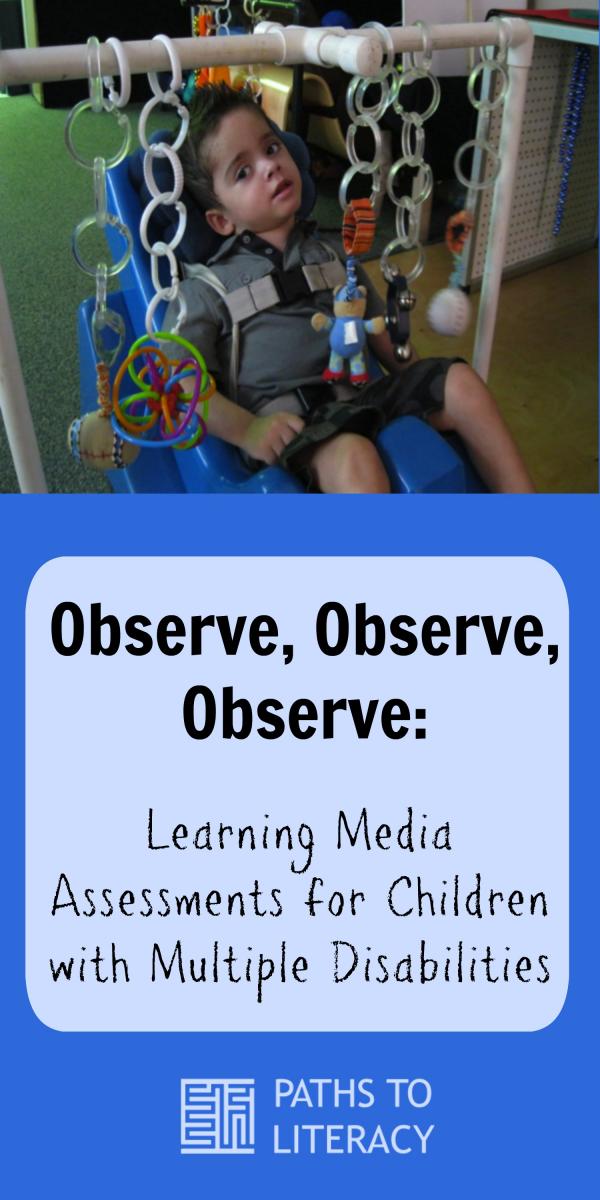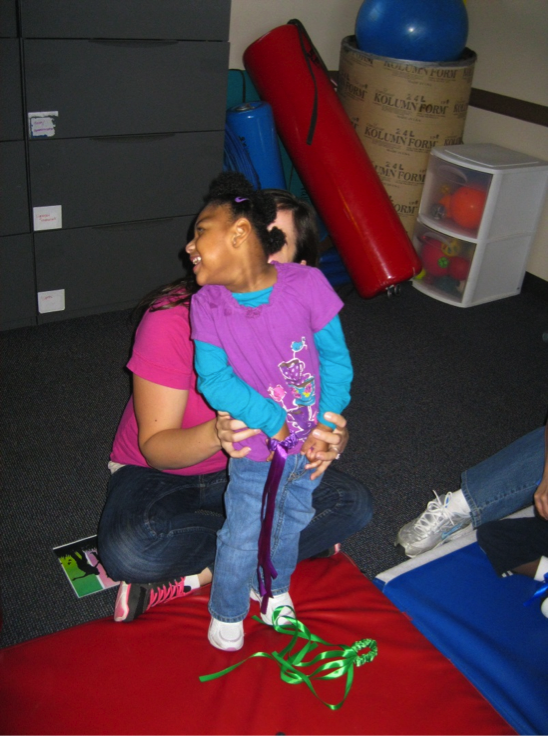Observe, Observe, Observe: Learning Media Assessments for Children with Multiple Disabilities
Submitted by Jaime Brown on Sep 08, 2014

Introduction:
A Learning Media Assessment (LMA) is an evaluation process that allows the observer to identify the student’s primary and secondary learning channel, i.e. whether they use their vision, hearing or tactual sense to gather and confirm information. A teacher of the visually impaired conducts the assessment. Frequently a LMA is conducted with a Functional Vision Assessment (FVA). These assessments are important because they provide valuable insight to how the student uses his/her vision (when applicable) and how they use their senses to learn.
Students with multiple disabilities may not initially present obvious clues into how they learn. Close observation will allow the evaluator to obtain critical information about the individual’s learning process.
There are several effective techniques to use when doing an LMA with a student with additional and severe to profound disabilities.
-
Set yourself up for success by choosing the activities you want your child to participate in, print plenty of observation sheets, and choose someone to help you. This person can be another teacher or a paraeducator.
-
Plan several observation sessions over a couple of weeks. This gives you a more accurate picture of the student’s learning. Students with multiple disabilities often have “off” days when they are fatigued, generally don’t feel well, have had several seizures, etc. During observations take notes of every reaction the student exhibits- facial expressions, movements, vocalizations, startles, eye gaze.
-
Interviews: If you are an itinerant TVI this is an essential component to your assessment. Talk to the family and ask how their child plays with toys, how they respond to activity within their environment, (Consult the FVLMA Practitioner’s Guidebook from APH for interview questions). Talk to the classroom teacher, the para educators and the therapists. They may all have the same or a different perspective of how the student learns.
Settings:
The setting greatly affects the LMA. When you observe the student in a variety of settings, you are able to obtain an accurate picture of their learning. Environmental factors in different settings affect how a student uses their vision. For example, a child with CVI may rely more on their hearing or touch to learn when the environment is cluttered, noisy, too bright, or overall busy. But, in a familiar, uncluttered setting, the student may use their vision more frequently during the activity. When possible, observe the student at home: maybe indoors and outdoors. If observing the student at the school is the only option, find unfamiliar settings within the school setting. Options may be a different room at school, the playground, and the hallway. Observe the student working with different support staff whenever possible.
Activities:
Observe the student participate in familiar activities with a familiar adult (at least twice). This will allow you to determine how the student learns when they are most comfortable. Then observe the student participating in new and unfamiliar activities. Note if they change their learning medium.
 Observe the students in a variety of activities that require use of different senses throughout the activity. For example, if they are turning on lights you won’t get an accurate picture of their use of hearing and touch. Appropriate activities that will provide an overall picture may be storytime with a storybox, sensory trays (students may reach first, listen to the sounds they tray makes, look at the tray before they touch), toybars, exploring activity bins, playing in the Little Room and cause and effect or switch activated toys.
Observe the students in a variety of activities that require use of different senses throughout the activity. For example, if they are turning on lights you won’t get an accurate picture of their use of hearing and touch. Appropriate activities that will provide an overall picture may be storytime with a storybox, sensory trays (students may reach first, listen to the sounds they tray makes, look at the tray before they touch), toybars, exploring activity bins, playing in the Little Room and cause and effect or switch activated toys.
It’s important to determine how a student uses their senses to learn. If a child is identified as a tactual, auditory or visual learner- identify how that student demonstrates their learning. Tactual learning may look different for students with multiple disabilities. They may make small movements with their hands or feet. A tactual learner may prefer hand under hand exploration for several opportunities before they are ready to move on their own. They may even prefer to use their arms, feet or face to gather information.
For a student that doesn’t have functional vision, they may be either a tactual or auditory learner. For example, I have two students that have light perception. After close observation, I was able to determine that they were auditory learners. They responded with small motor movements after receiving a verbal description. Although they are able to use their hands, their response is to listen first, then touch. Observe students in a quiet area- this allows you to pick up on the subtle responses a student is demonstrating. An auditory learner may slightly turn her head, lift her arms, and respond with a facial expression or a vocalization. They may also benefit from a quiet environment so they can use their hearing effectively.
A visual learner may look at the materials for several seconds before touching. Or they may look for several intervals and then respond with movement. One of my students has some vision in one eye. She is very motivated to use her vision. She will turn her head, twist her body, and bring the toy close to her face to explore. This takes a lot of energy, motor planning and time. She also becomes very excited with certain toys and she needs time to calm down before she can focus. Allow your student time to look, move and reach. When working with this student, I present the object within her visual field. I keep it there and she moves so that she can plan on the movement and not have to initiate a visual search after she is in a good position.
After you have identified a learning medium preference, continue to provide multi-sensory experiences. A student that has multiple disabilities needs repeated sensory rich activities to promote their learning. They can learn to use their hearing and touch to gather and confirm information. Verbal descriptions are frequently beneficial, whether or not they are using their vision.
When writing the evaluation, highlight the student’s primary and secondary learning medium. Provide a detailed description of HOW the student learns. This is essential information for other team members, including family. When the team understands how a child is learning, they can present information in an appropriate manner.



Comments
LMA for students with multiple disabilities